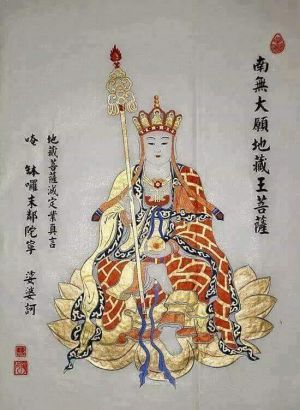Compte-rendu
by Per Kvaerne
(Oslo)
“Perhaps nowhere in the Buddhist world do questions of the production and reception of texts, of textual and cultural translation, and of historical transmission across time and place, appear so fascinating yet more obscure and less understood, than in the occasion of the early transmission of Tantric Buddhism to Tibet” (p. 6). I
t is against the background of this assertion – which certainly is entirely justified – that the volume under review must be assessed. A massive and highly important contribution to Tibetan studies, its significance should – at least potentially - transcend the boundaries of Tibetology.
Cantwell and Mayer’s book contains a critical edition of a text, the ‘Phags pa thabs kyi zhags pa padma ‘phreng gi don bsdus pa, “A Noble Noose of Methods, the Lotus Garland Synopsis”, to be found among the Dunhuang finds, “one of only two full-length, complete Ancient Tantra scriptures recovered form Dunhuang” (p. 2).
It is “admired as a key scripture by the rNying ma pa” (p.1) and is therefore also preserved in later textual compilations. Thus it is “prominently included in all known editions of the Ancient Tantra Collection (rNying ma’i rgyud ‘bum)” (p.1), and is also found in several local Kanjur
copies. Accordingly, it has been possible for the authors to prepare a critical edition (pp.103-228). The edition, divided into 42 short chapters, is in Tibetan script – the authors express the hope that this may make it more accessible to Tibetan readers. For each chapter the authors note the exact
location of the versions of the text in the various Kanjur editions as well as in other texts, and each and every variant reading is meticulously noted. This edition is followed by a hitherto little known Tibetan commentary to the root text, likewise found at Dunhuang. It, too, is carefully
presented in the form of a critical edition, this time, however, in transliteration. The Dunhuang version of the root text is embedded in the commentary, but the latter, although surviving in three Tenjur editions, “does not seem to have a consistent presence in appropriate rNying ma collections…and few if
any highly learned rNying ma lamas we showed it to appeared to have had much prior awareness of its existence” (pp. 2-3). Although the root text is not translated into English, there is a summary of the commentary (pp. 68-83), though not of the root text itself. Given this somewhat obscure history,
establishing the complicated stemma of the root text (pp. 43-67) is a remarkable scholarly achievement, made possible only through the unique and longstanding familiarity of the authors with Tibetan tantric texts of the rNying ma tradition. In itself this critical edition would be an impressive
achievement. In addition, the first hundred pages of the book, including the chapter “Textual Analysis” touched on above, are taken up by two further sections: “Introduction” and a chapter dealing with “Padmasambhava, the Thabs zhags and its Commentary”. As mentioned above, the book is of potential
interest for a wider academic circle of readers, especially historians of religion. A quotation from the Introduction will make this clearer: “TZ and TZComm [the two texts dealt with in this volume - PKv] present versions of Mahâyoga theory and practice that in their details bear resemblances to the
doctrine of the sameness of all dharmas (mnyam pa’i chos) of the rGyud gsang ba’i snying po… This famous doctrine of the rGyud gsang ba’i snying po, the basis of which involves realizing all phenomena as primordially pure, is seen by some modern scholars… as one of the historical roots of
the rDzogs chen or Great Perfection mysticism of the rNying ma pa. A very similar kind of thinking pervades the entirety of the TZComm, so that the various aspects of tantric ritual are consistently interpreted from this more inward or mystical viewpoint” (p. 4). rDzogs chen theory and practice (from
the rNying ma as well as the Bon traditions) has aroused considerable interest among Tibetan scholars, but like so much else in academic life, this interest remains constricted by the rhetoric of academic research and discourse.
Serious research, as instanced by the present volume, is, needless to say, essential, but it would be good if it could also be pursued in an interdisciplinary way so that Tibetan studies could be made more interesting and relevant to representatives of other fields of scholarship as well.
For example, a comparative study of a suitable rDzogs chen text and the English 14th century mystical text The Cloud of Unknowing might prove to be a fruitful beginning. Tibetan studies have undergone unprecedented development in recent decades, but are still hampered by a high degree of in-group
culture and frames of reference. While the present volume cannot receive anything but the highest praise, one or two minor questions might be pertinent. Thus one wonders why, since the root text is given in Tibetan script, the commentary is not likewise presented in Tibetan script. Personally I believe the
entire effort of using Tibetan script in this kind of publication is unnecessary, as it would seem highly unlikely that many of this volume will come into the hands of Tibetans who cannot read Tibetan in transliteration. More importantly, one misses an English translation of the root text, the more so as a
summary, as indicated above, is provided of the commentary. Perhaps a translation is planned for a future volume. Accompanying the book is a CD containing images of the Dunhuang manuscript of “A Noble Noose of Methods” and its commentary (IOL Tib J 321), from the Stein Collection, held at the British Library
in London. One can only admire the enormous care and effort that has gone into preparing this extremely important volume, and the authors deserve the warmest praise and gratitude of their colleagues.
